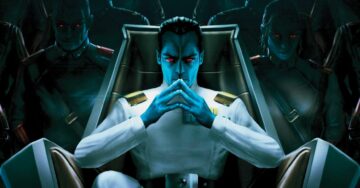Back in 2007, when Danny Boyle’s space-thriller Sunshine hit theaters, all the critical and audience response seemed to say roughly the same thing: Boyle wasted a really good serious space thriller by turning it into a silly space slasher. Bring up Sunshine with someone who’s seen it, and chances are high that they’ll say some variant on, “The first half where they’re just dealing with technical malfunctions was great, so why did he have to throw in a psycho killer?” Now everyone who’s ever claimed they wanted the full-length version of the first act of Sunshine has a chance to prove it: Netflix’s new space drama Stowaway is basically the somber, reality-driven space-crisis movie Sunshine initially pretended to be.
And it isn’t as satisfying as we once imagined.
Brazilian writer-director Joe Penna seems entirely devoted to keeping Stowaway low-key and realistic, at least to the degree it can be while maintaining his premise. That isn’t an approach filmmakers ever take with modern sci-fi, which is virtually always about big, broad action. There’s none of the humor or excitement of The Martian in Stowaway, and none of the breath-stealing speed or vertigo of Gravity, even though the premise recalls both of those movies. The film doesn’t even throw out ridiculous Star Trek-style technobabble in an attempt to whiz past its plot contrivances. For anyone who’s ever listened to recordings of a NASA launch, with grave, calm people carrying out their duties with capable focus, Stowaway will only barely feel fictionalized. There’s an impressive novelty to this kind of science fiction. Free of aliens, lasers, and explosions, as well as tantrums, Oscar-bait yelled speeches, and other histrionics, Stowaway is free to explore a professional crisis in a professional manner. It’s just that its approach is so far away from sci-fi conventions that it may not be able to hold viewers’ attention in the process.
Toni Collette, Anna Kendrick, and Daniel Dae Kim star as three astronauts on a two-year mission to Mars, where they’re meant to perform biological and botanical experiments that might pave the way for an eventual manned base. Marina (Collette), their commander, is on her third and final mission. The other two, David (Kim) and Zoe (Kendrick), are headed into space for the first time, and are both nervous and thrilled. Penna and co-writer Ryan Morrison signal their intentions for the film’s muted, tech-heavy tone by focusing on nothing but the minutiae of spaceflight for the first 20 minutes of the film’s 116-minute runtime: The three astronauts launch, dock with the station where they’ll be living on their journey, and unpack the gear in the station’s module. They take banal interview questions from Earthside media, and settle into their bunks. They exercise, begin their experiments, and gently josh each other. There’s no hint of tension or trouble for nearly a fifth of the movie.

Then, abruptly, they find themselves in Tom Godwin’s classic 1954 science-fiction story “The Cold Equations.” Their ship has an unexpected passenger: support-crew member Michael (Shamier Anderson), who somehow ended up trapped and unconscious inside their life-support module’s walls. They treat him and brief the support crews back home, confirming that there’s no way to abort the mission, or return him to Earth. With no other option, he eventually starts settling into an approximation of crew life. But the math on his presence doesn’t add up: thanks to a damaged carbon-dioxide scrubber and the presence of an extra human on board, the transit module doesn’t have enough oxygen for four people to make it to Mars. It might not even have enough oxygen for two of them to survive.
In The Martian, this exact kind of dilemma was used to spin out a tense thriller, alternating between a stranded astronaut and his support crew back home, both applying ingenuity and fierce determination toward solving the problem and saving his life. Penna and Morrison seemingly decide early on not to tease viewers with that kind of solution. Like “The Cold Equations,” Stowaway winds up being more about the inevitability of the situation, with an added moral question: If one of the four on ship has to die, which one should it be, and when and how should it happen?
There are a thousand ways this story could go, and Stowaway briefly and vaguely teases at pursuing a few of them, including the idea that Michael might have deliberately hitched a ride for some malign purpose. (The Sunshine version of this story absolutely would have turned him into a saboteur and a villain, stalking the ship to take the crew down for some nefarious reason.) Penna might have set the crew violently against each other, spinning up furious arguments or fights over who should die, and giving free rein to the kind of anger and resistance that often comes with the fear of death. They might have chased questions of blame for Michael’s presence, which is never explained, or even really explored. They might have dug into who’s most crucial to the mission, or whose family situation and future most warrants their survival. Given that Michael is the only Black cast member, there was even the potential for an up-to-the-moment political or social angle, considering whether his race, economic standing, or job affects the crew and support team’s thinking around his human value.
Instead, everyone’s remarkably contained about the dilemma, apart from acknowledging that no one wants to die, and no one wants to kill someone else. The crew members differ in the details of when Michael should be told, and how much of their margin of supply they should gamble on keeping him alive for a few more days. But those arguments are terse and subdued, like the rest of the film. Eventually, Penna moves the film toward action — but even that action is focused on the smallest details of science and procedure. The story gets extremely tense, but it’s never a bombastic tension. Even the ending avoids any sort of drama or hysteria.

Klemens Becker’s cinematography on the film is immaculate: The images are sharp and vivid, with lighting used to stark effect to create moods, whether the characters are sitting in bright labs or silhouetted against a distant Earth seen through a window. It’s a beautiful-looking film, with the coldness of 1960s and ’70s science fiction, enhanced by a striking cast seen in intimate close-ups and telling middle-distance shots. The production design and score all work toward a sense of tasteful, tragic reserve, a space where nothing can be wasted, and even slightly raised voices feel out of place.
But in spite of the scope of the setting — the vast reaches of outer space and the infinite void around the ship — Penna and Morrison keep this story so small, it could be performed on a single set onstage. They choose to never show the support team back home, or even have their voices clearly audible: when Marina or the others talk to their liaisons at home, they keep their earbuds in, and their monitors pointed away from the camera, so no other human faces or spaces can be seen. The environment is claustrophobic and isolated, the kind of pressure-cooker situation that’s meant to ramp up the tension in a horror film, or the desolation in a drama.
But Stowaway rarely takes advantage of that oppression, or connects with its characters in the way horror stories or dramas tend to do. The cast is more than capable: Kendrick has made a career-long specialty in playing intensely sincere characters whose charm wins out over whatever masks they try to wear, and Kim brings a mature weariness to his role as the least morally defensible of the bunch. Collette creates a lot of empathy for her character, even in an underwritten role who has so much of the decision-making taken out of her hands that she’s essentially just a mouthpiece. And Anderson nails a difficult part, playing a man who has to be meek enough to not over-assert himself and risk coming across as irrational or dangerous, but still has to have enough agency, personality, and spine not to come across as a cipher. It’s a great cast, they’re just held back at every moment by a story so decorous and reserved, so restrained and humble, that it barely registers.
And in the end, because the tone is so unvarying, it absolutely does not register that the movie is over until the credits start to roll. More than that, because the story has been so low-key and uninflected, it’s unclear what the ending means to any of the characters. A voiceover suggests a moral lesson, without underlining it. There’s no conclusion, no catharsis, and no checking in with any of the characters for a response to the final events. It’s all a strange experience in mood and melancholy, and in how minor details can be used to build a story. And very few people are likely to find it satisfying. This isn’t a story that needed a rogue murderer running amok on the ship, but it certainly needed something more, if only to keep viewers from feeling as untethered and adrift at the end as Penna’s camera is in his final wordless shot. It’s admirable to see him trying something so different from the run-of-the-mill space thriller, but apparently there’s a reason people don’t make science fiction movies this way.
Stowaway is now streaming on Netflix.
Source: https://www.polygon.com/22400459/stowaway-review-netflix
- Action
- ADvantage
- anger
- anna
- arguments
- around
- astronaut
- Audible
- audience
- Black
- board
- build
- Bunch
- carrying
- chances
- checking
- coming
- Conventions
- Credits
- crisis
- dealing
- Design
- DID
- Drama
- Early
- Economic
- Empathy
- Environment
- events
- Exercise
- faces
- family
- Fiction
- fights
- Film
- First
- first time
- Focus
- Free
- future
- Gear
- Giving
- good
- great
- High
- hold
- Home
- How
- HTTPS
- Humor
- idea
- Including
- Interview
- IT
- Job
- keeping
- Labs
- lasers
- launch
- man
- mars
- Masks
- math
- Media
- Members
- Mission
- mood
- moves
- movie
- Movies
- Nasa
- Netflix
- Option
- Other
- Others
- outer space
- Oxygen
- People
- Personality
- Production
- Race
- Ramp
- response
- REST
- Risk
- Roll
- running
- saving
- Science
- Science Fiction
- sense
- set
- setting
- small
- So
- Social
- Space
- spaceflight
- speed
- Spin
- start
- Stories
- streaming
- supply
- support
- Technical
- Thinking
- time
- transit
- treat
- value
- VOICES
- WHO
- Work










